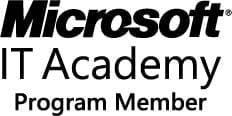In almost every state, computer science is taught as an elective, rather than a core requirement.
Leandre Nsabi, a senior at Rainier Beach High School here, received some bluntly practical advice from an instructor recently.
“My teacher said there’s a lot of money to be made in computer science,” Leandre said. “It could be really helpful in the future.”
That teacher, Steven Edouard, knows a few things about the subject. When he is not volunteering as a computer science instructor four days a week, Mr. Edouard works at Microsoft. He is one of 110 engineers from high-tech companies who are part of a Microsoft program aimed at getting high school students hooked on computer science, so they go on to pursue careers in the field.
In doing so, Microsoft is taking an unusual approach to tackling a shortage of computer science graduates — one of the most serious issues facing the technology industry, and a broader challenge for the nation’s economy.
There are likely to be 150,000 computing jobs opening up each year through 2020, according to an analysis of federal forecasts by the Association for Computing Machinery, a professional society for computing researchers. But despite the hoopla around start-up celebrities like Mark Zuckerberg of Facebook, fewer than 14,000 American students received undergraduate degrees in computer science last year, the Computing Research Association estimates. And the wider job market remains weak.
“People can’t get jobs, and we have jobs that can’t be filled,” Brad Smith, Microsoft’s general counsel who oversees its philanthropic efforts, said in a recent interview.
Big technology companies have complained for years about a dearth of technical talent, a problem they have tried to solve by lobbying for looser immigration rules to accommodate more foreign engineers and sponsoring tech competitions to encourage student interest in the industry. Google, for one, holds a programming summer camp for incoming ninth graders and underwrites an effort called CS4HS, in which high school teachers sharpen their computer science skills in workshops at local universities.
But Microsoft is sending its employees to the front lines, encouraging them to commit to teaching a high school computer science class for a full school year. Its engineers, who earn a small stipend for their classroom time, are in at least two hourlong classes a week and sometimes as many as five. Schools arrange the classes for first thing in the day to avoid interfering with the schedules of the engineers, who often do not arrive at Microsoft until the late morning.
The program started as a grass-roots effort by Kevin Wang, a Microsoft engineer with a master’s degree in education from Harvard.
In 2009, he began volunteering as a computer science teacher at a Seattle public high school on his way to work. After executives at Microsoft caught wind of what he was doing, they put financial support behind the effort — which is known as Technology Education and Literacy in Schools, or Teals — and let Mr. Wang run it full time.
The program is now in 22 schools in the Seattle area and has expanded to more than a dozen other schools in Washington, Utah, North Dakota, California and other states this academic year. Microsoft wants other big technology companies to back the effort so it can broaden the number of outside engineers involved.
via The New York Times – Nick Wingfield
The Latest Streaming News: Tech Talent in Schools updated minute-by-minute
Bookmark this page and come back often
Latest NEWS
Latest VIDEO








